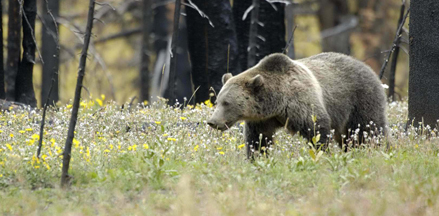 There’s lots of news about grizzly bears out there this month.
There’s lots of news about grizzly bears out there this month.
Is the Kangal, a Turkish breed of dog, more effective in protecting livestock from grizzly bears and wolves than the breeds traditionally used in the United States, such as Great Pyrenees and Akbash? A Utah State University doctoral student is studying the issue, with funds from National Wildlife Research Center, the research arm of the U.S. Department of Agriculture’s Wildlife Services. Read the story in the Great Falls Tribune.
In Montana, the use of electric fences is increasing to protect livestock, bee yards and other attractants from grizzly bears. The NGO Defenders of Wildlife helps fund the fences, which have proven to effectively deter grizzly bears. Read the story in the Great Falls Tribune.
An editorial in the Caspar Star-Tribune says that Wyoming governor Matt Mead needs to have some facts to back up his wish to have grizzly bears removed from the federal list of threatened species and he needs to share those facts with the public. Read the piece in the Caspar Star-Tribune.
Scientists from Oregon State University and Washington State University have published a paper in the Journal of Animal Ecology showing that the return of wolves to the Yellowstone ecosystem has meant more berries for bears. Read the press release on EurekAlert here.
Alberta Environment, Alberta Parks, Parks Canada and the University of Alberta are studying grizzly bear population, density and distribution in an area of Alberta. DNA analysis has already revealed 100 grizzly bears in the region. Read the story in The Western Producer.
Shoshone National Forest officials have temporarily banned soft-sided tents at campgrounds because of more grizzly bears than usual in the area. Read a very brief article in the Minneapolis Star-Tribune.
Photo: Grizzly walking in flowers in Yellowstone by Terry Tollefsbol
